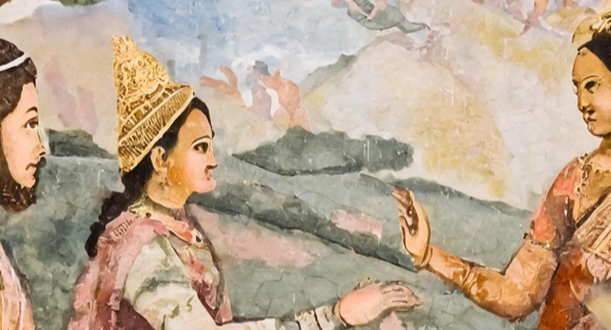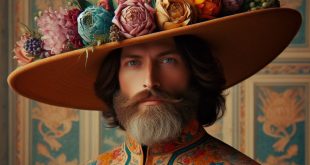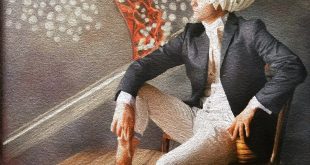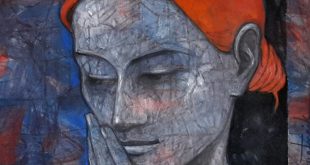The genius and original style of an iconic symbol of non-violence
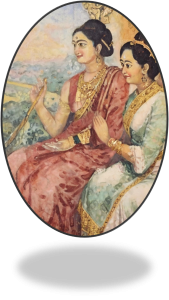 Meeting Benches https://meetingbenches.com/, a virtual meeting place where creativity knows no boundaries, invites you to explore art from around the world. By visiting this website, you will meet artists, thinkers and dreamers who share their visions and inspire each other. Whether you are an art enthusiast, a traveler, or simply a curious person, you will experience a series of delightful journeys through artistic realms. The intellectual properties of the images appearing in this blog, including those created by Dastilige Nevante in the style of Nandalal Bose, are to be attributed to their authors. Naturally, if you want to admire the works of this extraordinary Indian painter, we invite you to click on the individual reference links that enrich this post. Are you planning to visit India? He starts from the Ajanta Caves https://indianculture.gov.in/ajanta/caves, where his journey into creativity originated. If you want to meet other painters’ type https://meetingbenches.com/category/painters/.
Meeting Benches https://meetingbenches.com/, a virtual meeting place where creativity knows no boundaries, invites you to explore art from around the world. By visiting this website, you will meet artists, thinkers and dreamers who share their visions and inspire each other. Whether you are an art enthusiast, a traveler, or simply a curious person, you will experience a series of delightful journeys through artistic realms. The intellectual properties of the images appearing in this blog, including those created by Dastilige Nevante in the style of Nandalal Bose, are to be attributed to their authors. Naturally, if you want to admire the works of this extraordinary Indian painter, we invite you to click on the individual reference links that enrich this post. Are you planning to visit India? He starts from the Ajanta Caves https://indianculture.gov.in/ajanta/caves, where his journey into creativity originated. If you want to meet other painters’ type https://meetingbenches.com/category/painters/.
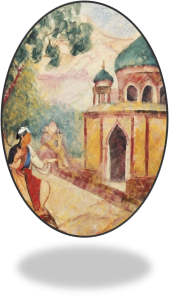 With a style that reflected a balance between the ancient and the contemporary, Nandalal Bose https://www.nationalheraldindia.com/art-and-culture/the-art-of-nandalal-bose-and-the-quest-for-true-swadeshi sought to combine traditional Indian art with modern influences. His mythological scenes and village life, imbued with a sense of spirituality and authenticity, depicted episodes from Indian mythology and daily life in villages. Focusing instead on the purity of form, this painter preferred clean lines and simple forms without ornamental excess. His favorite colors, ocher, brown and green, often earthy, not surprisingly recalled nature and rural life. As regards composition and brushstrokes, he experimented with styles that ranged from figuration to Zen abstraction that captured the essence of the subject, concretizing the calm of the scenes with broad and clear brushstrokes. His art, a fusion of tradition, spirituality and social commitment, with a touch of modernity, often reflected themes of social justice, equality and freedom. Born in December 1882 in Kharagpur, West Bengal, into a middle-class Bengali family, Nandalal Bose https://www.wikiart.org/en/nandalal-bose showed an early interest in art. His mother encouraged his creativity by improvising toys and dolls for him.
With a style that reflected a balance between the ancient and the contemporary, Nandalal Bose https://www.nationalheraldindia.com/art-and-culture/the-art-of-nandalal-bose-and-the-quest-for-true-swadeshi sought to combine traditional Indian art with modern influences. His mythological scenes and village life, imbued with a sense of spirituality and authenticity, depicted episodes from Indian mythology and daily life in villages. Focusing instead on the purity of form, this painter preferred clean lines and simple forms without ornamental excess. His favorite colors, ocher, brown and green, often earthy, not surprisingly recalled nature and rural life. As regards composition and brushstrokes, he experimented with styles that ranged from figuration to Zen abstraction that captured the essence of the subject, concretizing the calm of the scenes with broad and clear brushstrokes. His art, a fusion of tradition, spirituality and social commitment, with a touch of modernity, often reflected themes of social justice, equality and freedom. Born in December 1882 in Kharagpur, West Bengal, into a middle-class Bengali family, Nandalal Bose https://www.wikiart.org/en/nandalal-bose showed an early interest in art. His mother encouraged his creativity by improvising toys and dolls for him.
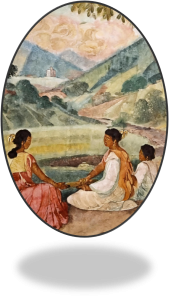 Here are some key aspects of the life and art of this pioneer of modern Indian art, a key figure in the movement known as Contextual Modernism. His artistic journey was marked by a deep commitment to art, so don’t be surprised if his work continues to resonate with audiences today. Deeply influenced by the murals of the Ajanta Caves, which left a lasting impression on his creative sensibility, this student of Abanindranath Tagore developed a truly Indian style of painting. His works often depicted scenes from Indian mythologies, women and village life. In 1922, Nandalal Bose https://meetingbenches.com/2018/12/nandalal-bose-indian-painter-a-creative-passion-bordering-on-devotion/ became the principal of Kala Bhavan, Santiniketan where he continued to cultivate his artistic vision of him. In particular, he was entrusted with the great honor of illustrating the Constitution of India. His paintings are considered by many critics to be among India’s most important modern works of art.
Here are some key aspects of the life and art of this pioneer of modern Indian art, a key figure in the movement known as Contextual Modernism. His artistic journey was marked by a deep commitment to art, so don’t be surprised if his work continues to resonate with audiences today. Deeply influenced by the murals of the Ajanta Caves, which left a lasting impression on his creative sensibility, this student of Abanindranath Tagore developed a truly Indian style of painting. His works often depicted scenes from Indian mythologies, women and village life. In 1922, Nandalal Bose https://meetingbenches.com/2018/12/nandalal-bose-indian-painter-a-creative-passion-bordering-on-devotion/ became the principal of Kala Bhavan, Santiniketan where he continued to cultivate his artistic vision of him. In particular, he was entrusted with the great honor of illustrating the Constitution of India. His paintings are considered by many critics to be among India’s most important modern works of art.
 To commemorate the arrest of Mahatma Gandhi during the salt tax protest, in 1930 Nandalal Bose created a black and white linoleum print https://www.culturalindia.net/indian-art/painters/nandlal-bose.html black man of Gandhi walking with a stick. This image, which has become iconic, symbolizes the spirit of non-violence everywhere. Artists such as Gaganendranath Tagore and Ananda Coomaraswamy recognized the genius and original style of their countryman. In 1976, due to the artistic and aesthetic value of his works, the Archaeological Survey of India declared them art treasures. Looking at his paintings, it will be easy for you to perceive that his art transcends time, fusing tradition and innovation. It is no coincidence, in fact, that he continues to inspire generations of artists and art enthusiasts.
To commemorate the arrest of Mahatma Gandhi during the salt tax protest, in 1930 Nandalal Bose created a black and white linoleum print https://www.culturalindia.net/indian-art/painters/nandlal-bose.html black man of Gandhi walking with a stick. This image, which has become iconic, symbolizes the spirit of non-violence everywhere. Artists such as Gaganendranath Tagore and Ananda Coomaraswamy recognized the genius and original style of their countryman. In 1976, due to the artistic and aesthetic value of his works, the Archaeological Survey of India declared them art treasures. Looking at his paintings, it will be easy for you to perceive that his art transcends time, fusing tradition and innovation. It is no coincidence, in fact, that he continues to inspire generations of artists and art enthusiasts.
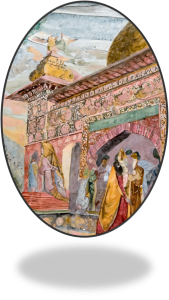
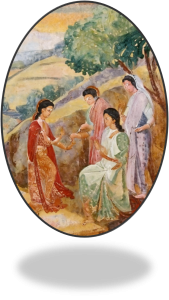 Nandalal Bose http://www.ngmaindia.gov.in/virtual-tour-of-nandalal-bose.asp was part of a vibrant artistic circle in his time. As his mentor and teacher, Abanindranath Tagore significantly influenced his artistic journey. Together, emphasizing indigenous themes and aesthetics, they supported the Indian style of painting. Jamini Roy was also a student of Abanindranath Tagore. Both artists broke away from imitation of the past and tried to find Indian identity in contemporary folk art. Roy’s bold use of folk motifs and earthy colors resonated with the spirit of Swadeshi. Okakura Kakuzō, instrumental in promoting Asian art and culture, connecting artists and writers from around the world who sought to revive Indian classical traditions, helped extend the Indian style of painting throughout the world. William Rothenstein, Yokoyama Taikan and Christiana Herringham, with collective efforts aimed at celebrating cultural heritage and promoting Indian creativity, were also part of the same circle as Nandalal Bose. Non only. Laurence Binyon, an English poet and art historian, shared Nandalal’s passion for the preservation and revitalization of traditional art forms. Two modernist sculptors, Eric Gill and Jacob Epstein, were part of the international network that appreciated and supported the artistic vision of this student of Tagore.
Nandalal Bose http://www.ngmaindia.gov.in/virtual-tour-of-nandalal-bose.asp was part of a vibrant artistic circle in his time. As his mentor and teacher, Abanindranath Tagore significantly influenced his artistic journey. Together, emphasizing indigenous themes and aesthetics, they supported the Indian style of painting. Jamini Roy was also a student of Abanindranath Tagore. Both artists broke away from imitation of the past and tried to find Indian identity in contemporary folk art. Roy’s bold use of folk motifs and earthy colors resonated with the spirit of Swadeshi. Okakura Kakuzō, instrumental in promoting Asian art and culture, connecting artists and writers from around the world who sought to revive Indian classical traditions, helped extend the Indian style of painting throughout the world. William Rothenstein, Yokoyama Taikan and Christiana Herringham, with collective efforts aimed at celebrating cultural heritage and promoting Indian creativity, were also part of the same circle as Nandalal Bose. Non only. Laurence Binyon, an English poet and art historian, shared Nandalal’s passion for the preservation and revitalization of traditional art forms. Two modernist sculptors, Eric Gill and Jacob Epstein, were part of the international network that appreciated and supported the artistic vision of this student of Tagore.
 Meeting Benches World art in all forms
Meeting Benches World art in all forms
